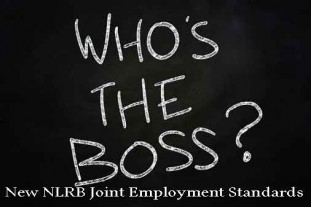 Layoff or Furlough? As California enters this unprecedented time with Mandatory “Shelter In Place” orders throughout California, many employers are facing the imminent decision to reduce workforce while we all face uncertainty over when normal business with resume. Many employers are unable to assign work to their employees at home and must consider greatly reducing their current workforce as soon as possible.
Layoff or Furlough? As California enters this unprecedented time with Mandatory “Shelter In Place” orders throughout California, many employers are facing the imminent decision to reduce workforce while we all face uncertainty over when normal business with resume. Many employers are unable to assign work to their employees at home and must consider greatly reducing their current workforce as soon as possible.
Employers reducing scheduling for non-exempt hourly employees with a reduced work schedule or not at all generally do not have to worry about liability for the reduction. However, a common question is what to do with employees and whether employees should be laid off or furloughed during this time.
Layoff vs. Furlough
A layoff can be temporary or permanent. It is recommended that layoffs occurring during this recent pandemic are temporary due to the unknown duration of the reduction of workforce. When laying off an employee, the employer must follow all California Labor Laws and the Worker Adjustment Retraining and Notification Act (WARN) with no expectation the employee will return to work in the future.
A layoff is a separation of the employment relationship and the rehire process must occur for the employee to rejoin the workforce. All benefits are terminated at the end of the term of the separation and the employee will no longer be employed by the employer.
A furlough occurs when the employer is reducing the days or weeks an employee may perform work. An employer will suspend the work of most or all employees and send them home without pay. This is a mandatory suspension from work that can last briefly or as long as the employer desires. It typically occurs when the employer wants to retain staff that they cannot afford. Furloughed employees also retain their benefits with the Company and retain their employment relationship with the employer.
Employees are generally furloughed when there is a reduction in workforce but the reduction is temporary and employees are expected to return to work on a certain date or a specific condition.
If an employee performs any work for the employer during the furlough, an exempt employee is entitled to an entire week’s pay and a non-exempt employee is entitled to payment for any time worked. Employee work includes checking e-mails, making phone calls, or performing any task for the employer. A “workweek” in California is defined as 7 consecutive days, starting with the same calendar day each week. The workweek can begin on any day and any hour. However, if an employer has no properly established workweek, the Division of Labor Standards Enforcement (DSLE) assumes the workweek is from Sunday through Saturday.
It is highly recommended that employers revoke all access for employees during the furlough and send notices of the change in employment status outlining the employer’s furlough procedures and policies.
The main difference between a furlough or laying off employees is that furloughed employees can come and go fairly easily but layoffs require the employer comply with all relevant Labor Laws, the federal and California WARN Act, and possibly conduct the rehiring process to reinstate the employees. Furloughed employees also retain their benefits and employment status with the employer while a lay off is the end of the employment relationship.
Work Adjustment Retraining Notification (WARN)
When an employer decides to layoff its workforce, it is important to comply with the Worker Adjustment Retraining Notification Act (WARN) both federally and within California.
Federal WARN
Compliance with Federal WARN laws is triggered when there are temporary layoffs longer than 6 months and the layoffs include 50+ employees in a 90 day period. Notice may be shortened if circumstances were not reasonably anticipated 60 days before the employee was laid off. However, actual notice must be given is a much advanced time as possible.
California WARN
The similar California WARN laws provides no exception for the 60 day notice rule and it has not yet been determined if COVID-19 would be an exception to the notice requirements. However, on March 17, 2020, Governor Newsom signed Executive Order N-31-20 relieving employers of some on these requirements.
Executive Order N-31-20 explains “the need to prevent or mitigate the spread of COVID-19” has caused employers to “close rapidly without providing their employees the advanced notice required under California Law. Therefore, Labor Code sections 1401(a), 1402, and 1403 are suspended for the employer at this time.
This order will be in effect for the duration of the COVID-19 “emergency” and provides notice still must be given but amends the 60 day requirement to “as soon as practicable.” The following is required by all California employers engaging in layoffs during this time:
- The employer must still give written notice to the employee under the WARN Act;
- The employer must give as much notice as practicable including a brief statement explaining why the notice is reduced;
- The notice must explain that COVID-19 was not reasonably foreseeable that the time notice would have been required; and
- The notice must include “If you have lots your job or been temporarily laid off, you may be eligible for Unemployment Insurance (UI). More information on UI and other resources available for employees is available at labor.ca.gov/coronavirus2019
It is anticipated further guidance will be given to employers in the upcoming week by the Employment Development Department (EDD).
Other Resources
While employers are faced with difficult decisions there are resources available for both employers and employees.
All employers have the option the offer paid Sick Leave and use of Paid Time Off to their employees during any temporary closure but cannot require the employee use Sick Time.
All employees with changes in their current employment status should check the EDD regarding possible unemployment compensation. Employers should advise their employees that more information is available at labor.ca.gov/coronavirus2019 for possible resources during this emergency.
Employers may also avoid potential layoffs by participating in Unemployment Insurance Work Sharing Program if the employer will reduce wages and hours no more than 60%. This allows for a quick adjustment when the business improves.
If your business is closing or you will be laying off your entire staff, you may be able to utilize the EDD’s Rapid Response Services.
If you are an “Essential Business” with an exception to the Shelter In Place Order and will be staying open during this time, you may consider possible waivers of liability and informed consent. A list of “Essential Business” can be found here.
[Read more…]

